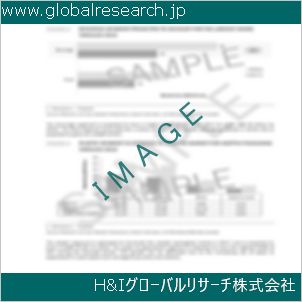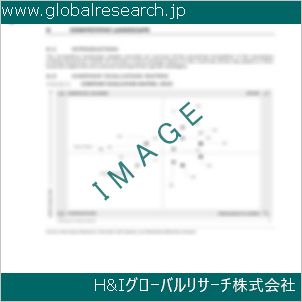Table of Contents
1 Industry Overview of 1-Hexene
1.1 Definition and Specifications of 1-Hexene
1.1.1 Definition of 1-Hexene
1.1.2 Specifications of 1-Hexene
1.2 Classification of 1-Hexene
1.3 Applications of 1-Hexene
1.3.1 Nuclear Application
1.3.2 Non-Nuclear Application
1.4 Industry Chain Structure of 1-Hexene
1.5 Industry Overview and Major Regions Status of 1-Hexene
1.5.1 Industry Overview of 1-Hexene
1.5.2 Global Major Regions Status of 1-Hexene
1.6 Industry Policy Analysis of 1-Hexene
1.7 Industry News Analysis of 1-Hexene
2 Manufacturing Cost Structure Analysis of 1-Hexene
2.1 Raw Material Suppliers and Price Analysis of 1-Hexene
2.2 Equipment Suppliers and Price Analysis of 1-Hexene
2.3 Labor Cost Analysis of 1-Hexene
2.4 Other Costs Analysis of 1-Hexene
2.5 Manufacturing Cost Structure Analysis of 1-Hexene
2.6 Manufacturing Process Analysis of 1-Hexene
3 Technical Data and Manufacturing Plants Analysis of 1-Hexene
3.1 Capacity and Commercial Production Date of Global 1-Hexene Major Manufacturers in 2023
3.2 Manufacturing Plants Distribution of Global 1-Hexene Major Manufacturers in 2023
3.3 R&D Status and Technology Source of Global 1-Hexene Major Manufacturers in 2023
3.4 Raw Materials Sources Analysis of Global 1-Hexene Major Manufacturers in 2023
4 Capacity, Production and Revenue Analysis of 1-Hexene by Regions, Types and Manufacturers
4.1 Global Capacity, Production and Revenue of 1-Hexene by Regions 2019-2024
4.2 Global and Major Regions Capacity, Production, Revenue and Growth Rate of 1-Hexene 2019-2024
4.3 Global Capacity, Production and Revenue of 1-Hexene by Types 2019-2024
4.4 Global Capacity, Production and Revenue of 1-Hexene by Manufacturers 2019-2024
5 Price, Cost, Gross and Gross Margin Analysis of 1-Hexene by Regions, Types and Manufacturers
5.1 Price, Cost, Gross and Gross Margin Analysis of 1-Hexene by Regions 2019-2024
5.2 Price, Cost, Gross and Gross Margin Analysis of 1-Hexene by Types 2019-2024
5.3 Price, Cost, Gross and Gross Margin Analysis of 1-Hexene by Manufacturers 2019-2024
6 Consumption Volume, Consumption Value and Sale Price Analysis of 1-Hexene by Regions, Types and Applications
6.1 Global Consumption Volume and Consumption Value of 1-Hexene by Regions 2019-2024
6.2 Global and Major Regions Consumption Volume, Consumption Value and Growth Rate of 1-Hexene 2019-2024
6.3 Global Consumption Volume and Consumption Value of 1-Hexene by Types 2019-2024
6.4 Global Consumption Volume and Consumption Value of 1-Hexene by Applications 2019-2024
6.5 Sale Price of 1-Hexene by Regions 2019-2024
6.6 Sale Price of 1-Hexene by Types 2019-2024
6.7 Sale Price of 1-Hexene by Applications 2019-2024
6.8 Market Share Analysis of 1-Hexene by Different Sale Price Levels
7 Supply, Import, Export and Consumption Analysis of 1-Hexene
7.1 Supply, Consumption and Gap of 1-Hexene 2019-2024
7.2 Global Capacity, Production, Price, Cost, Revenue, Supply, Import, Export and Consumption of 1-Hexene 2019-2024
7.3 USA Capacity, Production, Price, Cost, Revenue, Supply, Import, Export and Consumption of 1-Hexene 2019-2024
7.4 EU Capacity, Production, Price, Cost, Revenue, Supply, Import, Export and Consumption of 1-Hexene 2019-2024
7.5 China Capacity, Production, Price, Cost, Revenue, Supply, Import, Export and Consumption of 1-Hexene 2019-2024
7.6 Japan Capacity, Production, Price, Cost, Revenue, Supply, Import, Export and Consumption of 1-Hexene 2019-2024
8 Major Manufacturers Analysis of 1-Hexene
8.1 Manufacturer One
8.1.1 Company Profile
8.1.2 Product Picture and Specifications
8.1.2.1 Type I
8.1.2.2 Type II
8.1.2.3 Type III
8.1.3 Capacity, Production, Price, Cost, Gross and Revenue
8.1.4 Contact Information
8.2 Manufacturer Two
8.2.1 Company Profile
8.2.2 Product Picture and Specifications
8.2.2.1 Type I
8.2.2.2 Type II
8.2.2.3 Type III
8.2.3 Capacity, Production, Price, Cost, Gross and Revenue
8.2.4 Contact Information
8.3 Manufacturer Three
8.3.1 Company Profile
8.3.2 Product Picture and Specifications
8.3.2.1 Type I
8.3.2.2 Type II
8.3.2.3 Type III
8.3.3 Capacity, Production, Price, Cost, Gross and Revenue
8.3.4 Contact Information
8.4 Manufacturer Four
8.4.1 Company Profile
8.4.2 Product Picture and Specifications
8.4.2.1 Type I
8.4.2.2 Type II
8.4.2.3 Type III
8.4.3 Capacity, Production, Price, Cost, Gross and Revenue
8.4.4 Contact Information
8.5 Manufacturer Five
8.5.1 Company Profile
8.5.2 Product Picture and Specifications
8.5.2.1 Type I
8.5.2.2 Type II
8.5.2.3 Type III
8.5.3 Capacity, Production, Price, Cost, Gross and Revenue
8.5.4 Contact Information
…
9 Marketing Trader or Distributor Analysis of 1-Hexene
9.1 Marketing Channels Status of 1-Hexene
9.2 Traders or Distributors with Contact Information of 1-Hexene by Regions
9.3 Ex-work Price, Channel Price and End Buyer Price Analysis of 1-Hexene
9.4 Regional Import, Export and Trade Analysis of 1-Hexene
10 Industry Chain Analysis of 1-Hexene
10.1 Upstream Major Raw Materials Suppliers Analysis of 1-Hexene
10.1.1 Major Raw Materials Suppliers with Contact Information Analysis of 1-Hexene
10.1.2 Major Raw Materials Suppliers with Supply Volume Analysis of 1-Hexene by Regions
10.2 Upstream Major Equipment Suppliers Analysis of 1-Hexene
10.2.1 Major Equipment Suppliers with Contact Information Analysis of 1-Hexene
10.2.2 Major Equipment Suppliers with Product Pictures Analysis of 1-Hexene by Regions
10.3 Downstream Major Consumers Analysis of 1-Hexene
10.3.1 Major Consumers with Contact Information Analysis of 1-Hexene
10.3.2 Major Consumers with Consumption Volume Analysis of 1-Hexene by Regions
10.4 Supply Chain Relationship Analysis of 1-Hexene
11 Development Trend of Analysis of 1-Hexene
11.1 Capacity, Production and Revenue Forecast of 1-Hexene by Regions and Types
11.1.1 Global Capacity, Production and Revenue of 1-Hexene by Regions 2024-2029
11.1.2 Global and Major Regions Capacity, Production, Revenue and Growth Rate of 1-Hexene 2024-2029
11.1.3 Global Capacity, Production and Revenue of 1-Hexene by Types 2024-2029
11.2 Consumption Volume and Consumption Value Forecast of 1-Hexene by Regions, Types and Applications
11.2.1 Global Consumption Volume and Consumption Value of 1-Hexene by Regions 2024-2029
11.2.2 Global and Major Regions Consumption Volume, Consumption Value and Growth Rate of 1-Hexene 2024-2029
11.2.3 Global Consumption Volume and Consumption Value of 1-Hexene by Types 2024-2029
11.2.4 Global Consumption Volume and Consumption Value of 1-Hexene by Applications 2024-2029
11.3 Supply, Import, Export and Consumption Forecast of 1-Hexene
11.3.1 Supply, Consumption and Gap of 1-Hexene 2024-2029
11.3.2 Global Capacity, Production, Price, Cost, Revenue, Supply, Import, Export and Consumption of 1-Hexene 2024-2029
11.3.3 USA Capacity, Production, Price, Cost, Revenue, Supply, Import, Export and Consumption of 1-Hexene 2024-2029
11.3.4 EU Capacity, Production, Price, Cost, Revenue, Supply, Import, Export and Consumption of 1-Hexene 2024-2029
11.3.5 China Capacity, Production, Price, Cost, Revenue, Supply, Import, Export and Consumption of 1-Hexene 2024-2029
11.3.6 Japan Capacity, Production, Price, Cost, Revenue, Supply, Import, Export and Consumption of 1-Hexene 2024-2029
12 New Project Investment Feasibility Analysis of 1-Hexene
12.1 New Project SWOT Analysis of 1-Hexene
12.2 New Project Investment Feasibility Analysis of 1-Hexene
13 Conclusion of the Global 1-Hexene (CAS 592-41-6) Industry 2024 Market Research Report
| ※参考情報 1-ヘキセンは、化学式C₆H₁₂を持つ直鎖状のアルファオレフィンに分類される化合物であり、CAS番号は592-41-6です。この化合物は、一般的に石油化学工業の重要な中間体として広く利用されています。1-ヘキセンは、主にオレフィンの一種で、炭素原子が二重結合で結合している特徴を持っています。 1-ヘキセンの分子構造は、最初の炭素原子に二重結合があることが特徴で、これによりその化学特性が決まります。通常、1-ヘキセンは無色の液体であり、特有の甘い香りを持ちます。また、その沸点は約ボイル点が約65°Cで、密度は約0.66 g/cm³です。化合物自体は水に不溶である一方で、脂肪族と有機溶剤には溶けやすい性質を持ちます。 1-ヘキセンの最も一般的な用途は、ポリマーの製造における重要な原材料として利用されることです。特に、低密度ポリエチレン(LDPE)の製造プロセスにおいて、1-ヘキセンは共重合モノマーとしての役割を果たします。これにより、ポリエチレンの物性を改良し、加工性や機械的特性を向上させることができます。また、1-ヘキセンはその他の高分子材料の合成においても利用され、例えば、反応性モノマーや界面活性剤の前駆体としても重要な役割を果たします。 さらに、1-ヘキセンは化学合成の中間体として使用されることもあります。例えば、アルコール、エステル、アルデヒド、あるいはカルボン酸などの合成において、反応原料として利用されます。また、1-ヘキセンが持つ二重結合により、さまざまな反応を経て新しい機能性材料を製造することが可能です。 その特徴的な構造により、1-ヘキセンは非常に反応性が高く、さまざまな触媒反応において日常的に使用されています。特に、付加反応や重合反応においては非常に有用であり、これにより新しい素材や化学製品の設計が進められています。 また、1-ヘキセンは燃料や潤滑剤の成分としても利用されます。化石燃料を元にした製品の中で、性能を向上させるために多くの添加剤が必要になりますが、1-ヘキセンはその特性から、こうした用途でも価値があります。実際に、工業用潤滑剤や燃料添加剤の製造において、粘度や流動性を改善するために配合されることがあります。 1-ヘキセンのさらなる利点としては、経済的かつ効率的に生産できる点が挙げられます。石油精製プロセスやクラッキングプロセスを通じて大量に生成されるため、供給が安定しており、低コストで使用することが可能です。また、環境への配慮も高まっている現代においては、より持続可能な方法で製造される新しい技術の開発が進んでいます。これにより、1-ヘキセンを含む製品が環境に優しい選択肢として評価される機会も増えています。 関連技術としては、1-ヘキセンを含む多くの合成プロセスにおいて使用される触媒技術が挙げられます。特に、メタロセン触媒を用いたオレフィンポリメラーゼやその他の高度な触媒システムの開発が進んでおり、これにより1-ヘキセンの利用範囲が広がっています。また、これらの技術の進歩により、より効率的かつ選択的に化学反応を進行させることが可能となり、製品の質や性能も向上しています。 加えて、1-ヘキセンが持つ二重結合は、化学的な応答性を利用して様々な機能性材料を合成するための基盤を提供します。このような反応を利用して新しいナノ材料や生体適合性材料の開発が進められており、医療分野や材料工学での応用が期待されています。 総じて、1-ヘキセンは、その役割や特性により現代の化学産業において非常に重要な位置を占めています。今後もその用途や関連技術の進展により、更なる発展が期待されている化合物です。 |
❖ 免責事項 ❖
http://www.globalresearch.jp/disclaimer












